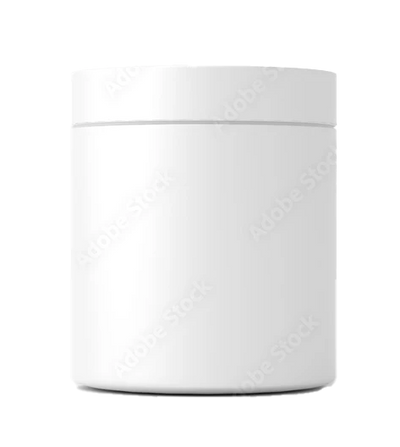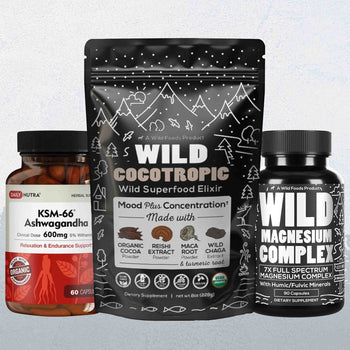The Difference Between Vitamin D3 and D2 and Which is Better?
Vitamin D and D3 are crucial micronutrients your body needs. But how do you get them, and what is the difference of each? Here, you'll learn everything you need to know about these nutrients so you can best optimize your health.
Vitamin D3 is one of the most sought-after supplements. It's thought that more than 40 percent of people are vitamin D deficient, which influences everything from mood regulation to immune cell modulation.
In addition to being one of the few nutrients that is difficult to obtain from food alone, our bodies get most of their D from sunlight exposure.
What is vitamin D3
Cholecalciferol, a vitamin D3, is a fat-soluble vitamin that plays an essential role in bone health, immune function, cell proliferation, and other functions. Experts agree that it is necessary to defend against various chronic diseases, including heart disease, cancer, inflammation, and autoimmune disorders.
Your body creates vitamin D on its own when your skin is exposed to sunlight. Vitamin D is also obtained through foods and supplements.
Unfortunately, vitamin D deficiency is widespread, and certain groups are at a higher risk of deficiency. Notably, older people, those who get limited sun exposure, and individuals who are overweight/obese or have darker skin tones are at an increased risk.
Two forms of Vitamin D
There are two forms of vitamin D: Vitamin D2 and Vitamin D3. Both are absorbed by the body in different ways. Vitamin D3 is reactivated as 1,25-dihydoxyvitamin D, which is an active form of vitamin D.
Vitamin D3 is exclusively in fish, liver, eggs, cod liver oil, and most animal foods.
Meanwhile, vitamin D2 is mainly found in mushrooms, and fortified foods, such as cereal (the latter we don’t recommend).
A report published in the Journal of Endocrinology and Metabolism revealed that vitamin D3 was almost twice as successful at raising vitamin D levels in the blood than vitamin D2, which is metabolized differently.
Choose vitamin D3 over vitamin D2 in supplement form because of this reason.
Vitamin D3 Benefits
Bone health: There is no doubt that vitamin D3 is crucial for bone health. In children, one of the most severe vitamin D3 deficiency symptoms is rickets, a condition in which the bones become soft and weak. Vitamin D enhances bone health by boosting calcium absorption, which is critical to skeletal integrity. It also helps process phosphorus, another essential bone mineral, in addition to doing so.
Weight loss: Some research indicates that people with more body fat have lower vitamin D levels. Taking vitamin D3 may enhance weight loss and boost fat-burning. For example, one study demonstrated that supplementing with calcium and vitamin D increased weight loss and fat elimination compared to a control group.
Immune function: Vitamin D3 provides several excellent advantages, one of which is boosting immunity and helping overall health. In addition to preventing wound healing and boosting the risk of infection, a lack of this crucial micronutrient can hamper the function of immune cells in the body.
Researchers have found that lower vitamin D levels are associated with a higher risk of recent respiratory tract infections, showing just how crucial this vitamin is for immunity. Experts now advocate deficient individuals raise their vitamin D3 levels quickly by taking a high dose of up to 10,000 IU/day for a few weeks. Consult your doctor before starting any supplement routine.
Mental health: Some research suggests vitamin D may boost mental health and brain function. Studies have indicated that low vitamin D status may be connected with:
Bipolar disorder
Depression
Anxiety
Alzheimer’s
Additionally, one study from Washington University School of Medicine linked vitamin D deficiency to poor mood and diminished cognitive function in older people.
Food Sources of Vitamin D
Eating a few foods rich in vitamin D3 is an easy way to increase your intake of this critical fat-soluble vitamin.
Here are the best vitamin D3 foods:
Cod Liver Oil
Wild-Caught fatty fish
Beef liver
Eggs
It may be important to take a D3 supplements.
Meeting your vitamin D needs through sun exposure is the most effective way to maintain healthy levels. If sun exposure is not possible or lacking, use a vitamin D3 supplement as well as increasing your consumption of D-rich foods. Taking vitamin D supplements can be a quick and convenient way to meet your vitamin D needs and protect against the risk of deficiency.
Choosing vitamin D3 over vitamin D2 to maximize absorption is the best choice if you opt to take one. Vitamin D should also be born with meals since it requires a good source of fat to be absorbed.
How much vitamin D3 should I take daily? Currently, the recommended dietary allowance for vitamin D is as follows:
400 IU: infants 0-12 months
600 IU: Children and adults 1 - 70 years old
800 IU: 70+-year-old adults
Vitamin D3 Side Effects
Is it possible to take too much vitamin D3? What are the symptoms if you do?
Researchers believe that doses of up to 10,000 IU per day of vitamin D can be taken without symptoms of toxicity, even though the current upper limit is set at 4,000 IU per day.
However, it is crucial to take vitamin D supplements in line with directions and avoid taking large amounts of vitamin D3. Abdominal pain, vomiting, nausea, and confusion are some potential adverse effects of vitamin D3.
Stop taking vitamin D3 if you experience any adverse side effects, and consult with your physician.
It is essential to talk with a well-informed health care professional before starting supplements if you have any underlying health issues. Vitamin D, in particular, may worsen symptoms associated with kidney disease or hyperparathyroidism, as it causes increased calcium absorption.
https://pubmed.ncbi.nlm.nih.gov/19263591
https://www.ncbi.nlm.nih.gov/pmc/articles/PMC3447082
*Statements regarding dietary supplements have not been evaluated by the FDA and are not intended to diagnose, treat, cure, or prevent any disease or health condition.



































